Submitted by WA Contents
UIA World Congress reveals architecture pavilions addressing to UN's Sustainable Development Goals
Denmark Architecture News - May 01, 2023 - 11:35 3747 views
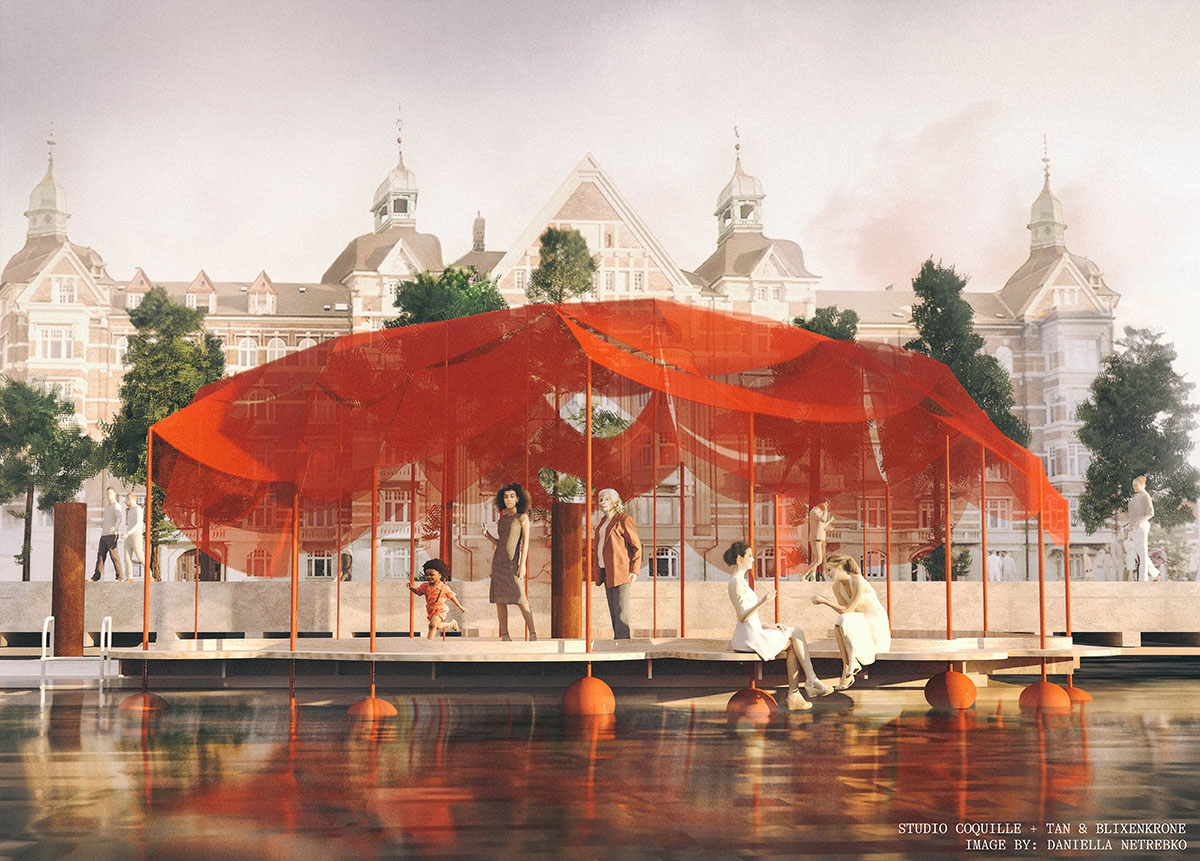
The UIA World Congress of Architects has revealed architecture pavilions addressing to the the UN's Sustainable Development Goals (SDGs) in Copenhagen, Denmark.
The 28th UIA World Congress of Architects will take place from July 2 to 6, 2023 at the Bella Center in Copenhagen, where Bjarke Ingels, Diébédo Francis Kéré, EC President Ursula von der Leyen, Christian Benimana, Kunlé Adeyemi will deliver talks during the congress. See the full programme of the congress on WAC's previous article.
Called The SDG Pavilions, the pavilions are designed in response the congress' central question of "How can architects and the building industry contribute to achieving the UN's Sustainable Development Goals (SDGs)?."
All the pavilions, envisioned as 1:1 experimental projects as part of the World Capital of Architecture and the UIA World Congress of Architects in Copenhagen, will be the explorative constructions that will invite visitors on selected locations in Copenhagen.
The SDG Pavilions will be built on selected locations in Copenhagen, including the city’s iconic harbor area.
Each pavilion will be built as a result of a collaboration between architects, engineers, material producers, science institutions, associations, and foundations, all working towards asking the right questions when it comes to building for the future, relating to one or more of the UN's 17 Sustainable Development Goals.
The SDG Pavilions are designed by several high-profiled Danish international studios, including Schmidt Hammer Lassen, EFFEKT, Architects Without Borders Denmark, ReVærk, LOKAL, Leth & Gori, Rønnow Architects, GXN, FORMA, Terroir, AART, Mangor & Nagel, NOAA Architects, Studio Coquille, Tan & Blixenkrone, ATENASTUDIO, and MAST.
The pavilions address the issue of "how to live and build with lower Co2 emissions"
The proposed pavilions showcase the latest ideas from Danish architecture studios, addressing how to live and build with lower Co2 emissions and higher regard for people and the shared environment, including thoughts on communal spaces, materials, health, food and sanitation infrastructures, and climate change.
"We experience an enormous drive among architects and the rest of the building industry to contribute with new and more sustainable materials, construction methods, housing concepts, and there is a need for us to provide space for experimentation," said Lars Autrup, CEO at the Danish Association of Architects.
"Together with the City of Copenhagen and CPH City & Port Development, we have therefore made an open invitation to the industry to present their visions for how we can contribute to sustainable development."
"And especially this year, we have a unique opportunity to show and discuss solutions for the future with professionals and other interested parties who have their eyes fixed on Denmark during the World Capital of Architecture and not least the UIA World Congress of Architects in July," Autrup added.
The project is presented by the Danish Association of Architects and the UIA World Congress of Architects Copenhagen in collaboration with the City of Copenhagen and CPH City & Port Development. The pavilions are created in relation to the World Congress, and present activities to congress guests and visitors throughout the summer to celebrate Copenhagen as the World Capital of Architecture in 2023.
Since the UN’s Sustainable Development Goals contain a complex mix of goals and sub-goals on social, economic, and environmental sustainability, the SGD Pavilions aim to provide answers to a palette of today's challenges and urgent issues.
The UIA World Congress of Architects emphasized that all SGD Pavilions will be accessible to everyone and will be built with emphasis on responsible consumption of materials with plans for recycling, reassembly or reuse after the exhibitions.
Read on to explore the full pavilions with their short project descriptions by architects:
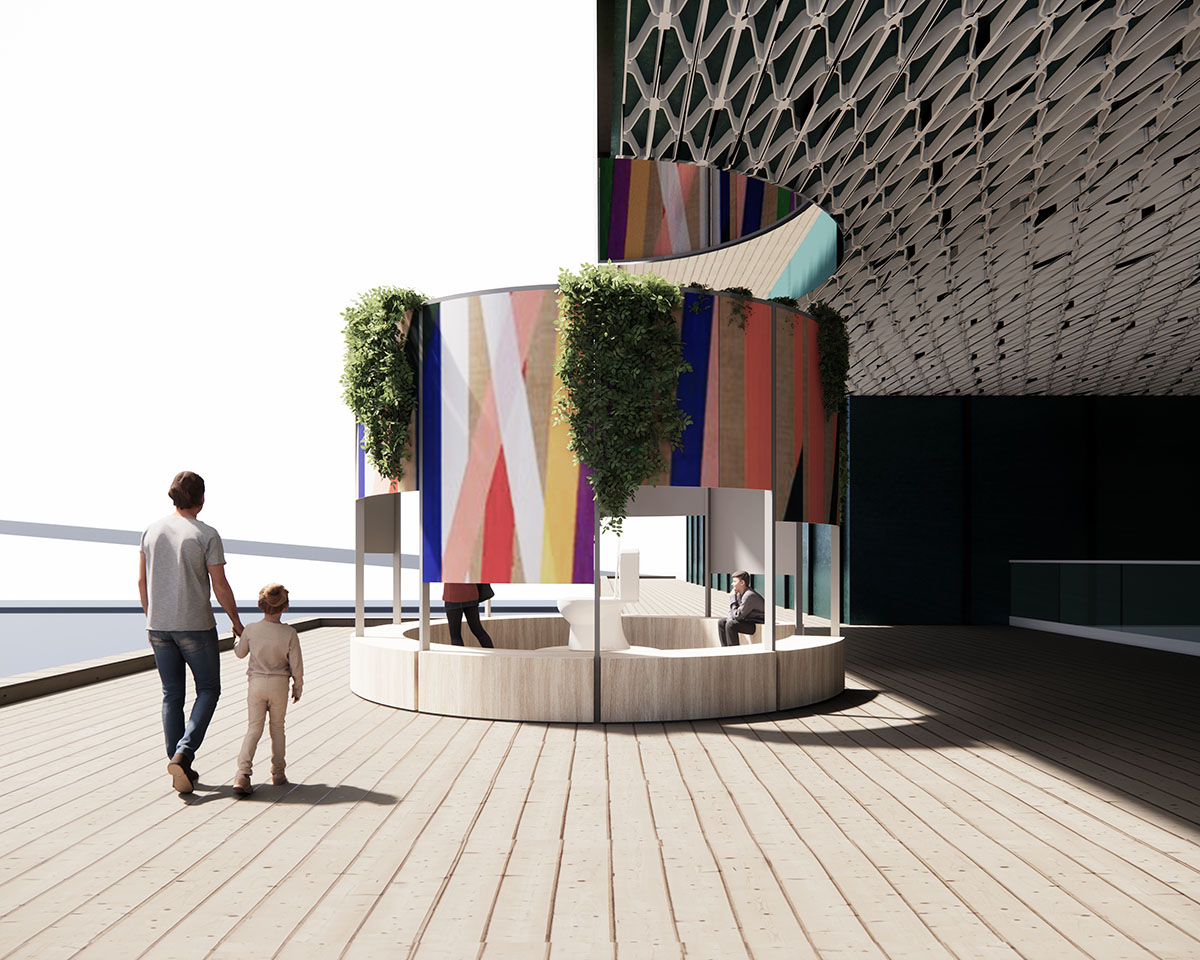
Image courtesy of Architects without Borders
SDG 6: Clean Water and Sanitation
Bio-Center by Architects Without Borders
"Architects Without Border’s pavilion is an interpretation of one of their actual development projects, the “Bio-centre”. Through basic sanitary functions, a bio-center provides crucial services in a densely packed slum – while creating a social focal point."
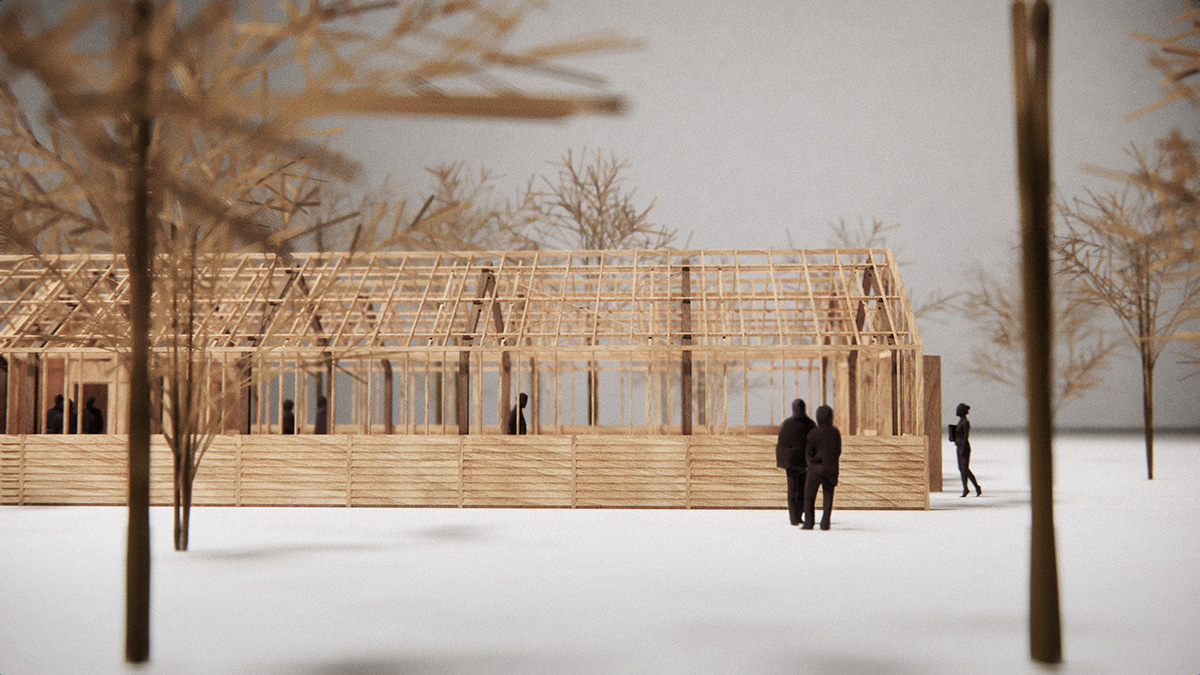
Image courtesy of FORMA
SDG 11: Sustainable Cities And Communities
The Greenhouse by FORMA
"The Greenhouse is a space inviting entrepreneurs, visitors and the local community to reconnect with nature and learn the importance of nurturing ecosystems for current and future generations. The pavilion is a lighthouse project, highlighting the need and potential of green, educational and regenerative spaces in the hearts of our cities and a clubhouse-space to meet and explore regenerative futures for our cities in the face of the climate crisis."
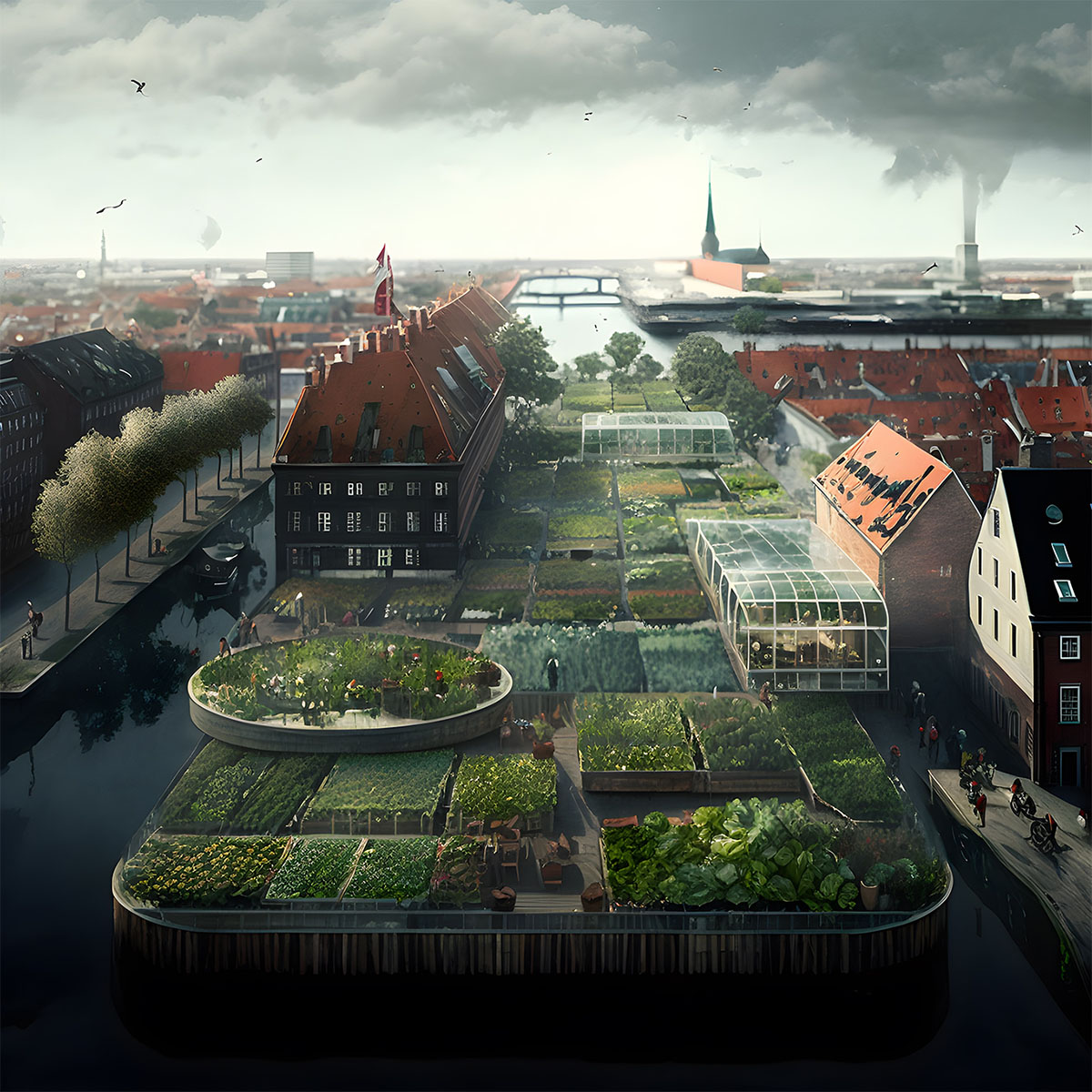
Image courtesy of SHL Architects
SDG 11: Sustainable Cities And Communities
Food Futures Imagined by Schmidt Hammer Lassen Architects
"Food Futures Imagined is an interactive, physical and digital pavilion that showcases the content of a parallel publication entitled ‘The Hacktivist’s Guide to Food Security’. You can explore the publication through the pavilion and use your own mobile device to be part of the exhibition space."
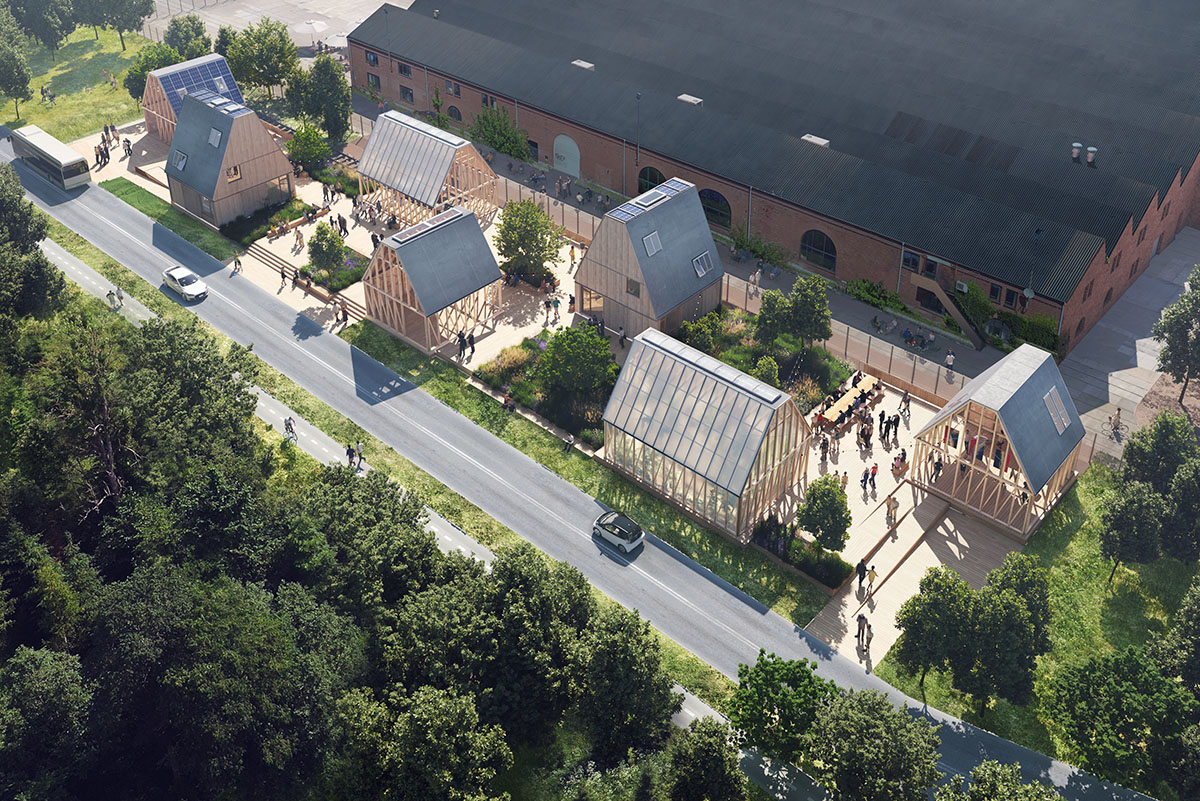
Image courtesy of EFFEKT Architects
SDG 11: Sustainable Cities And Communities
Living Places Copenhagen by EFFEKT Architects
"Living Places Copenhagen – the first seven prototypes of the concept, show how we can develop sustainable buildings with a three times lower CO2 footprint and a first-class indoor climate. The concept holds the lowest CO2 emissions in Denmark, demonstrating that we do not have to wait for future technology to build more sustainably."
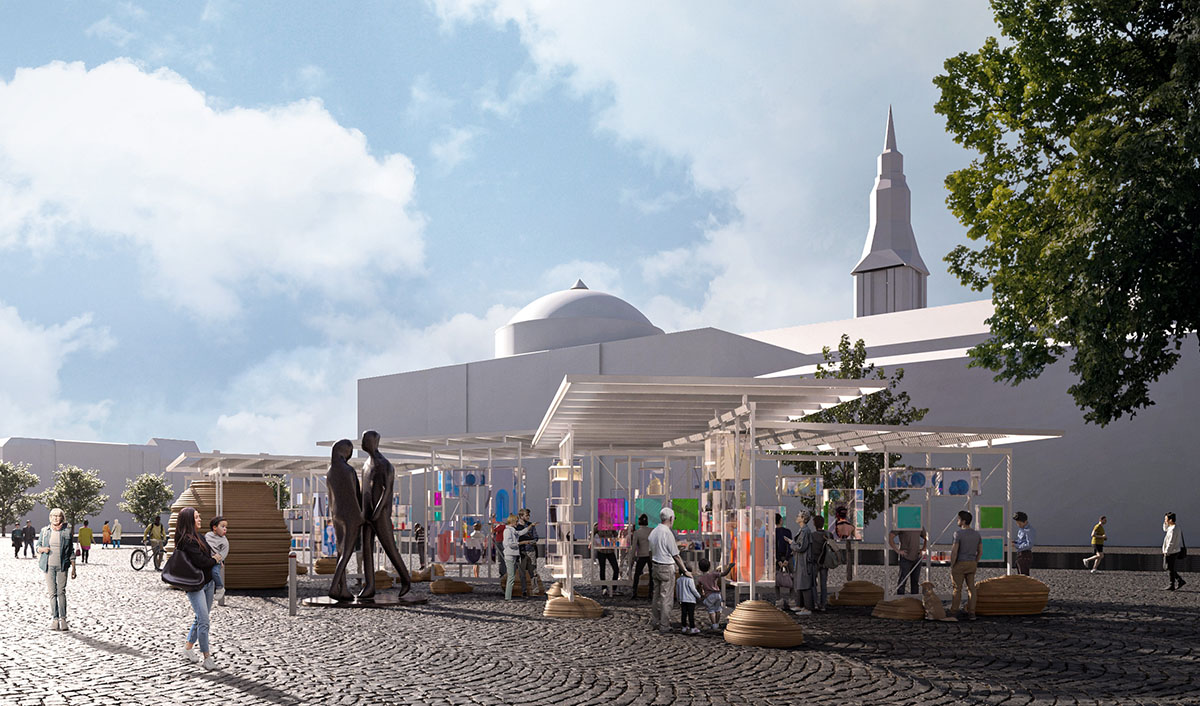
Image courtesy of Terroir
SDG 12: Responsible Consumption and Production
Plastic Pavilion – Building Sustainable Societies by Terroir
"Plastic has a potential role in establishing more sustainable societies. In the times to come, building materials need to be sustainable, meaning that they are reusable or recyclable, and preferably made from recycled content. Many of the synthetic materials, plastic, and other polymers have these properties while at the same time being durable, lightweight, cheap, and easy to shape."
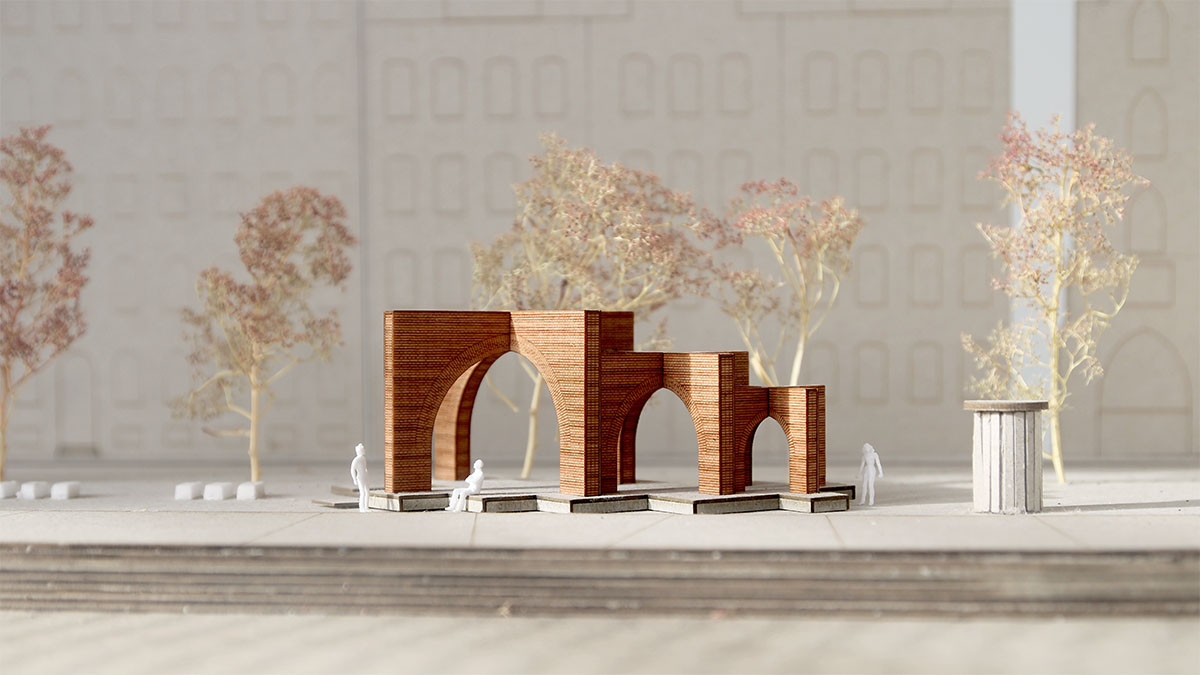
Image courtesy of Mangor & Nagel
SDG 12: Responsible Consumption and Production
Bricks in Common by AART, NOAA
"The brick pavilion ‘Bricks in Common’ brings our attention to this double bind: brick has a potentially long lifespan – it is, however, also a very energy-consuming material to produce. If we want brick to play a larger part of the sustainable development, we need further innovation, development, and more design for disassembly."
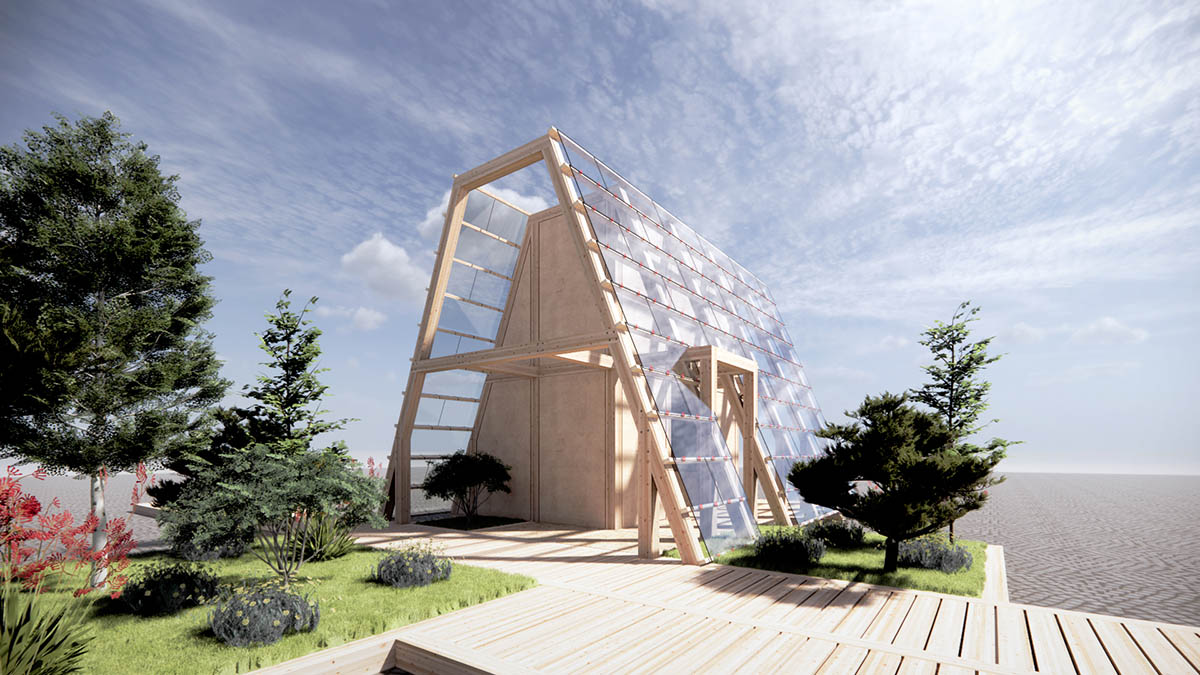
Image courtesy of LOKAL
SDG 12: Responsible Consumption and Production
From 4 to 1 Planet by ReVærk, Tegnestuen LOKAL, Leth & Gori, Rønnow Architects, BOGL
"From 4 to 1 Planet is an initiative aimed at reducing climate impact from residential buildings to a fourth of the current level. Find three different answers to this question in our three pavilions, developed by next generations architects."
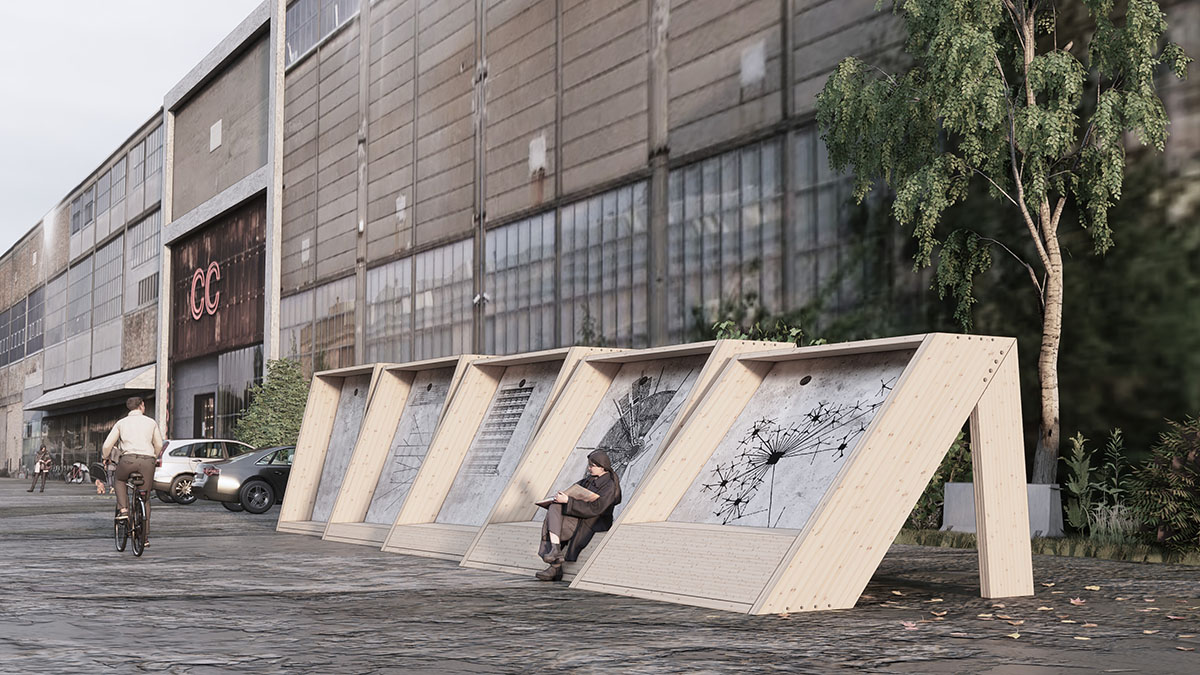
Image courtesy of 3XN
SDG 11: Sustainable Cities And Communities
(P)recast by GXN
"The (P)recast pavilion challenges conventional attitudes towards precast concrete in sustainable, equitable urban development. As Denmark faces a wave of demolitions targeting post-war social housing, the (P)recast pavilion is taking a stand against the perception of these buildings as outdated and unattractive. (P)recast showcases innovative use of precast concrete elements, a construction system that has dominated the Danish industry since the 1950s."
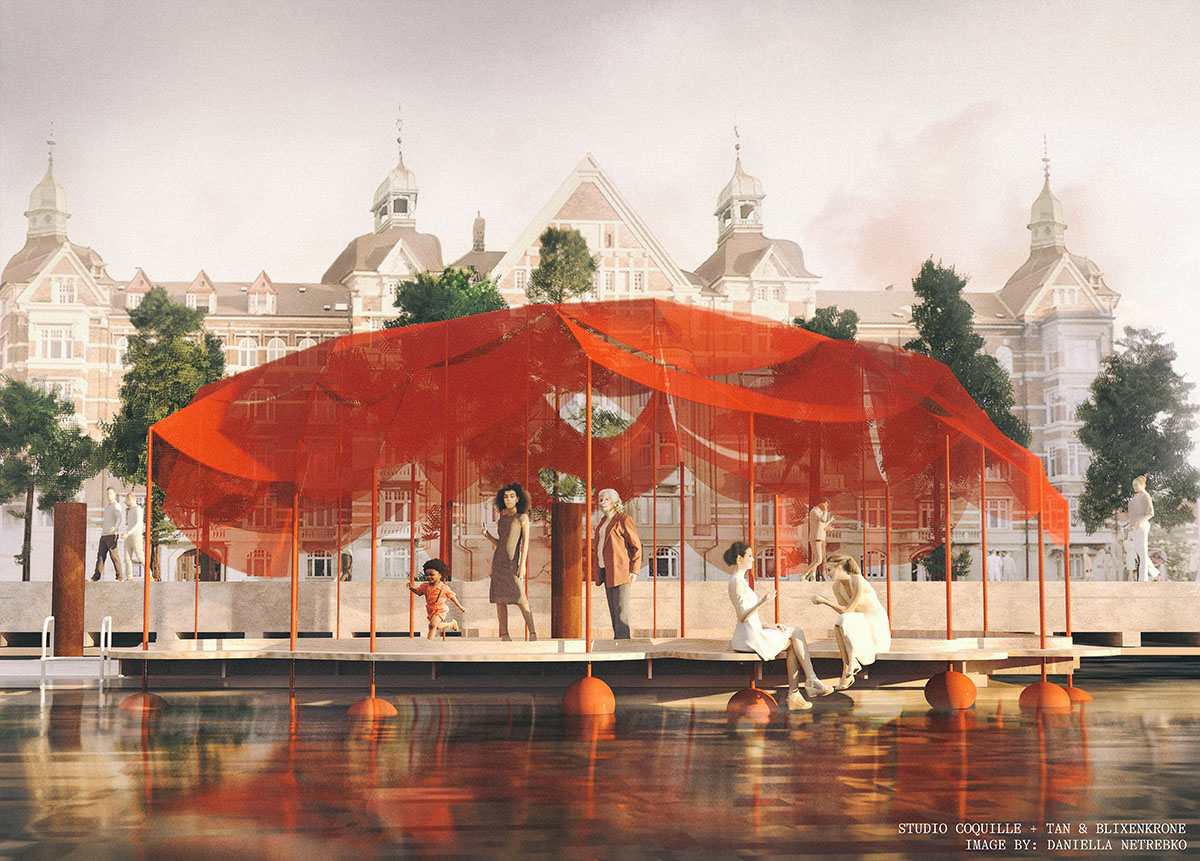
Image courtesy of Studio Coquille, render by Daniella Netrebko
SDG 13: Climate Action
The Raft by Studio Coquille, Tan & Blixenkrone
"The Raft is presented as a sensory structure landing on one of Copenhagen canal’s floating platforms, aiming at offering visitors a direct and playful sensorial experience with the water. Inspired by underwater sea animals and working with geometries and technics of sailings boats, the structure is designed to capture the movements of the water into the colorful roof and create a living animal."
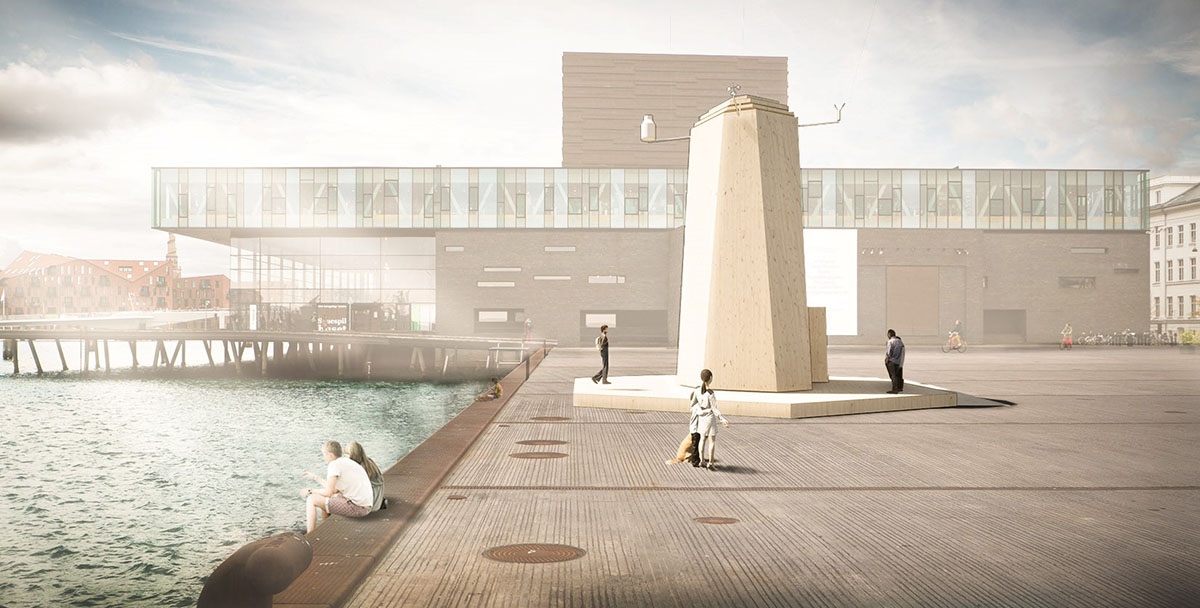
Image courtesy of Atenastudio
SDG 09: Industry, Innovation, and Infrastructure
Tower of Wind by Anna Maria Indrio (Atenastudio), Henning Frederiksen, Christian Fogh, Simone Aaberg Kærn (Artist)
"The Tower of Wind is meant as a monument celebrating sustainable architecture, in which the public can experience a journey through the history of meteorology and get an insight into how future technology can help combat climate challenges."

Image courtesy of MAST
SDG 13: Sustainable Consumption and Production
Obel Award: Unpavilion by MAST
"The unPAVILION is a statement piece – that prompts curiosity, debate, and reflection on our contemporary and future uses of resources. It also points to the counterproductive nature of greenwashing."
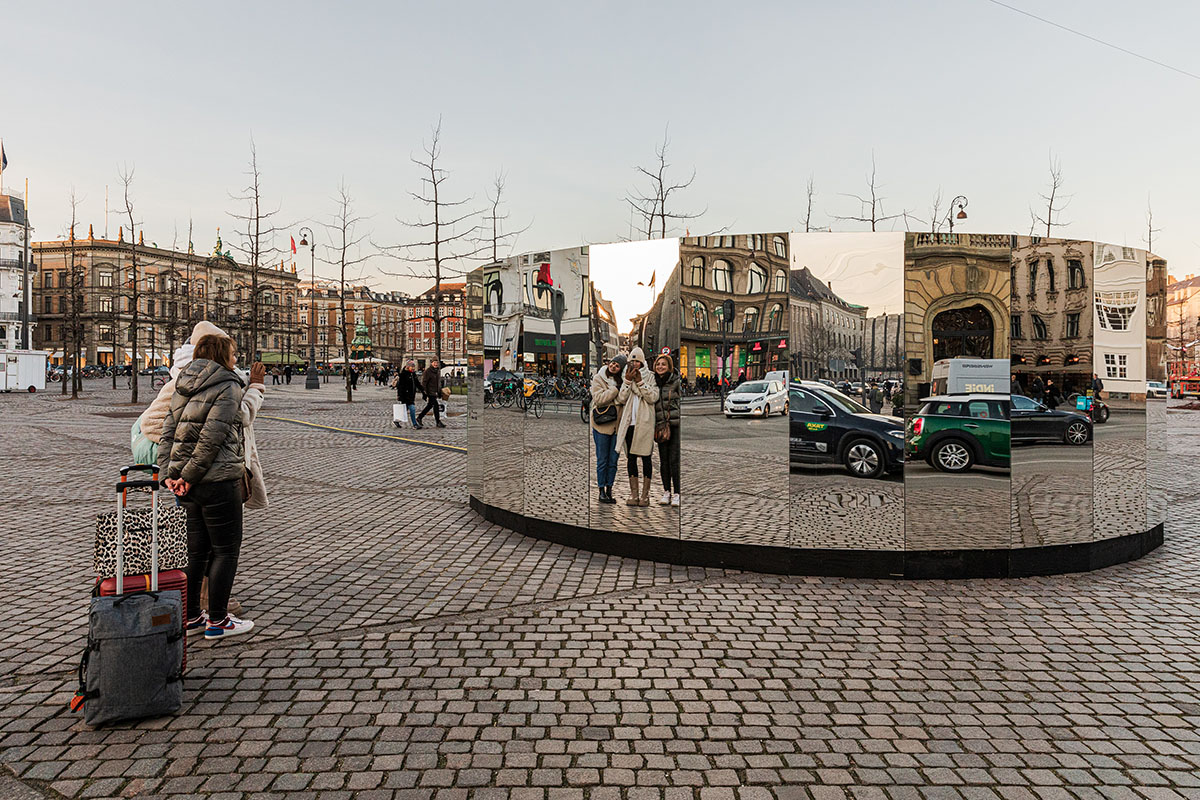
Image courtesy of City of Copenhagen
Reflections in Common City Architecture, City of Copenhagen
"Architecture is only given meaning once we interact with it. The concept of the pavilion ‘Reflections in Common’ is materialised in the design, which allows people to look at themselves against the backdrop of the city, and is a reflection space for the World Capital of Architecture 2023."
Top image: The Raft by Studio Coquille, Tan & Blixenkrone. Image courtesy of Studio Coquille, render by Daniella Netrebko.
